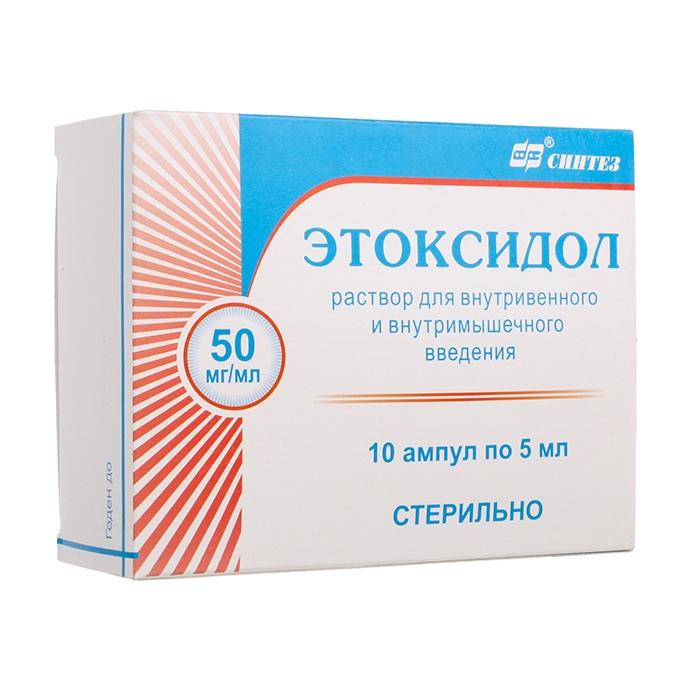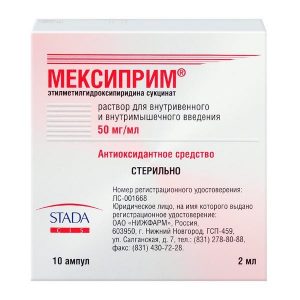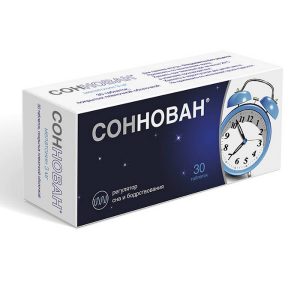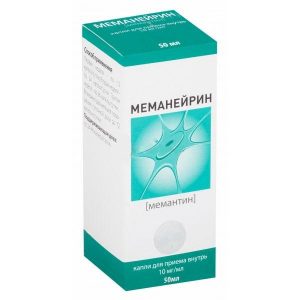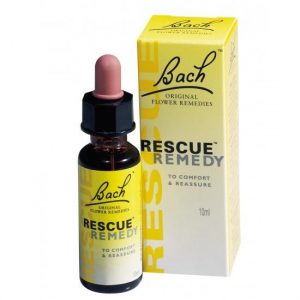Description
Release form
Solution for intravenous and intramuscular administration of 50 mg / ml.
Pharmacological action
Pharmacodynamics
Ethoxidol is an inhibitor of free radical processes, has a membrane protective, antihypoxic, nootropic, anticonvulsant, anxiolytic effect, increases the body’s resistance to stress. Ethoxidol has anti-ischemic properties, improves blood flow in the ischemic zone, limits the area of ischemic damage, detects a lipid-lowering effect, reduces the content of total cholesterol and low density lipoproteins.
The drug increases the body’s resistance to various damaging factors, to oxygen-dependent pathological conditions (shock, hypoxia, ischemia, cerebrovascular accident, intoxication with alcohol and antipsychotics (antipsychotics)). Ethoxidol is able to modulate the functional and metabolic state of red blood cells, to adjust the functional status of the liver and kidneys.
Restoring the activity of synthesis of macroergic metabolite of 2,3-diphosphoglycerate, the drug increases the dissociation of oxyhemoglobin and restores oxygen tension.
The effectiveness of this drug in encephalopathies is due to an increase in oxygen in arterial blood by the penetration of ethoxidol through the blood-brain barrier.
The drug improves cerebral metabolism and blood supply to the brain, improves microcirculation and rheological properties of blood, reduces platelet aggregation. It stabilizes the membrane structures of blood cells (red blood cells and platelets) during hemolysis.
The mechanism of action of the drug is due to its antioxidant, antihypoxic and membrane protective action. It inhibits lipid peroxidation, increases the activity of superoxide dismutase, reduces the content of total organic peroxides, thereby accelerating the metabolism of aldosterone (by normalizing the activity of the CYP3A4 isoenzyme), increases the ratio of lipid proteins, reduces the viscosity of the membrane, and increases its fluidity. By inhibiting peroxides and the activity of oxidants, it blocks the oxidation of -Lipoproteins (low density lipoproteins), which are the main substrate for the formation of atherosclerotic plaques in blood vessels. It modulates the activity of membrane-bound enzymes (calcium independent phosphodiesterase, adenylate cyclase, acetylcholinesterase), receptor complexes (benzodiazepine, GABA, acetylcholine), which enhances their ability to bind to ligands, helps preserve the structural and functional organization of biomembranes, transport of neurotransmitters and improves synaptic transmission.
Pharmacokinetics of
With intramuscular administration of ethylmethylhydroxypyridine, malate is detected in plasma within 4 hours after administration. The time to reach maximum concentration is 0.25 hours. The maximum concentration at a dose of 100 mg is 0.3-1.06 μg / ml. Ethylmethylhydroxypyridine malate rapidly passes from the bloodstream to organs and tissues and is rapidly eliminated from the body. The retention time of ethyl methylhydroxypyridine malate (MRT) is 1.84-2.38 hours. The half-life is 1.15-1.75 hours. Ethyl methylhydroxypyridine malate is excreted from the body by the kidneys, mainly in a glucuronoconjugated form and in small amounts unchanged.
Indications
acute cerebrovascular accident
discirculatory encephalopathy
autonomic dystonia syndrome
mild cognitive impairment of atherosclerotic genesis
anxiety disorders with neurotic and neurosiso-vascular disorders
acute intoxication with antipsychotics
Contraindications
Hypersensitivity to the drug or its components. Acute hepatic and / or renal failure, pregnancy, lactation, age under 18 years.
Caution.
Allergic diseases and reactions in history.
Special instructions
During treatment, care must be taken when driving vehicles and engaging in other potentially dangerous activities that require increased concentration of attention and speed of psychomotor reactions.
Composition
Active ingredient: ethylmethylhydroxypyridine malate (ethoxidol) – 50 mg.
Excipients: N-acetyl-L-glutamic acid – 34 mg, deiol (2- (dimethylamino) ethanol) – 16 mg, glycine – 0.1 mg, disodium edetate (disodium ethylenediamine-N, N, N ‘, N’-tetraacetic acid 2-aqueous [Trilon B]) – 0.5 mg, water for injection – up to 1.0 ml.
Dosage and administration
Ethoxidol is administered intramuscularly and intravenously (in a stream or drop). With the infusion method of administration, the drug should be diluted in a 0.9% sodium chloride solution. Doses are selected individually. They begin therapy with a dose of 50-100 mg 1-3 times a day, gradually increasing to obtain a therapeutic effect. Jet ethoxidol is administered slowly for 5-7 minutes, drip at a speed of 40-60 drops per minute. The maximum daily dose should not exceed 800 mg.
In acute cerebrovascular accidents Ethoxidol is prescribed in combination therapy in the first 2-4 days intravenously (dropwise) at a dose of 200-300 mg, then 100 mg intramuscularly 3 times a day. The duration of treatment is 10-14 days.
In case of discirculatory encephalopathy in the decompensation phase and autonomic dystonia syndrome, Ethoxidol is administered intravenously in a stream or drop dose of 100 mg 2-3 times a day for 14 days. Then – intramuscularly at 10.0 mg 2 times a day for 14 days.
For the course of prophylaxis of discirculatory encephalopathy, the drug is administered intramuscularly at a dose of 100 mg 2 times a day for 10-14 days.
For mild cognitive impairment of atherosclerotic origin and anxiety disorder in neurotic and neurosis-like conditions, the drug is administered intramuscularly in a daily dose of 100-300 mg / day for 14-30 days.
When stopping withdrawal symptoms in alcoholism with a predominance of neurosis-like and autonomic-vascular disorders, Ethoxidol is administered intramuscularly at a dose of 100-200 mg 2-3 times a day or intravenously drip 1-2 times a day for 5-7 days.
In acute antipsychotic intoxication, Ethoxidol is administered intravenously at a dose of 50-300 mg per day for 7-14 days.
Side effects
Dryness, metallic taste in the mouth, sensations of spreading warmth throughout the body, sore throat and discomfort in the chest, feeling of lack of air (usually associated with an excessively high rate of administration and are short-term) with prolonged use – nausea, flatulence of sleep disturbances (drowsiness or violation of falling asleep).
Drug Interactions
Enhances the effects of benzodiazepine anxiolytics, anticonvulsants (carbamazepine), antiparkinsonian drugs (levodopa). Reduces the toxic effects of ethyl alcohol.
Overdose
Symptoms: sleep disturbances (insomnia, in some cases drowsiness) with intravenous administration – a slight and short-term (up to 1.5-2 hours) increase in blood pressure.
Treatment: usually not required – symptoms disappear on their own within a day. In severe cases with insomnia, nitrazepam 10 mg, oxazepam 10 mg or diazepam 5 mg. With an increase in blood pressure – antihypertensive drugs under the control of blood pressure.
Storage conditions
In the dark place at a temperature of no higher than 25 ° C.
Keep out of the reach of children.
Term hodnosty
3 years
Active ingredient
Ethylmethylhydroxypyridine malate
Sdlkp pharmacy
prescription
Form of Treatment
simply entails dlya inaektsiy and infusing
